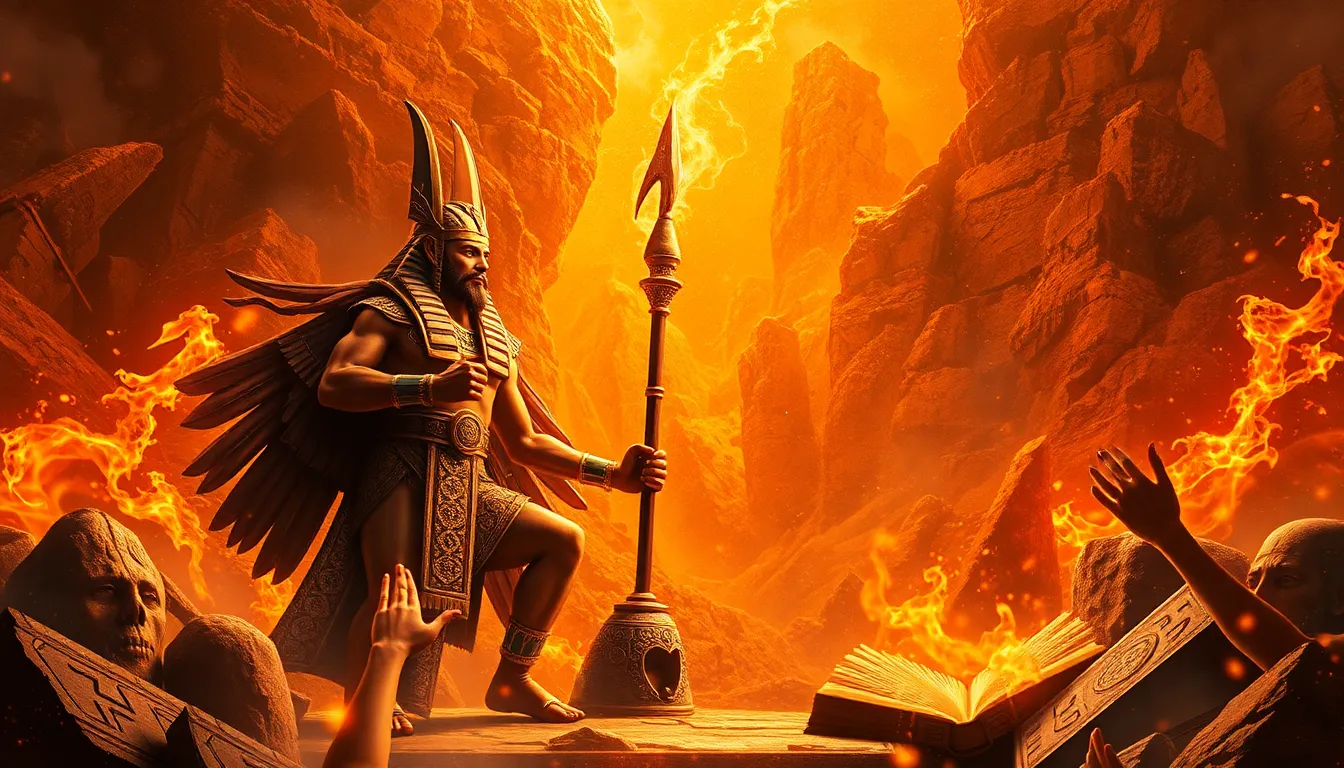Seth: The God of Chaos and His Legendary Tales
I. Introduction
Seth, one of the most intriguing figures in Egyptian mythology, embodies the essence of chaos and disorder. He is often depicted as a complex character whose tales intertwine with themes of conflict, power, and the duality of existence. His significance in ancient beliefs underscores the importance of chaos not merely as destruction but as a necessary force in the cyclical nature of life.
This article seeks to explore the origins, myths, and cultural interpretations of Seth, shedding light on his multifaceted persona and the impact he has had on both ancient Egyptian society and modern culture.
II. Origins of Seth
A. Birth and family background
Seth’s lineage traces back to Geb, the god of the earth, and Nut, the goddess of the sky. He is part of a divine family that includes his siblings:
- Osiris – the god of the afterlife
- Isis – the goddess of magic and motherhood
- Nephthys – the goddess of the night and mourning
From the outset, Seth was destined to play a significant role in the divine narrative, influenced by the contrasting legacies of his siblings.
B. Early representations in Egyptian art and texts
In early depictions, Seth is often illustrated with a unique animal head, resembling a composite of various creatures. This imagery symbolizes his chaotic nature and his connection to the unknown. Ancient texts and artifacts reveal that Seth was revered and feared, recognized for his power yet shunned for the chaos he represents.
III. The Duality of Seth
A. Seth as the god of chaos and disorder
Seth’s identity as the god of chaos is pivotal in understanding his role in the cosmos. He embodies the following:
- Symbolism of chaos: Seth represents the forces that disrupt harmony, challenging the established order.
- Connection to storms: Often associated with storms and tumultuous weather, his presence is felt in the unpredictable elements of nature.
- Foreign lands: Seth is also linked to the deserts and foreign territories, emphasizing his role as a god of the unknown.
B. Complex nature: protector vs. destroyer
Despite his association with chaos, Seth’s character is not solely destructive. His duality is illustrated through various myths:
- Myths showcasing his protective role: In some tales, Seth is depicted as a protector of Ra, the sun god, defending him from the serpent Apophis.
- Contradictions in his character: This complexity highlights the ancient belief that chaos and order are intertwined, each necessary for the other’s existence.
IV. The Myth of Osiris and Seth
A. Overview of the Osiris myth
One of the most famous myths involving Seth is that of Osiris, his brother. The narrative revolves around themes of jealousy, betrayal, and resurrection.
B. Seth’s role in Osiris’ death and resurrection
Seth’s actions in the Osiris myth are pivotal:
- The significance of the murder: Consumed by envy of Osiris’ power, Seth murders him, dismembering his body and scattering the pieces across Egypt.
- Consequences for Seth: This act of betrayal sets off a chain of events leading to his eventual conflict with Osiris’ son, Horus. The murder not only marks Seth as a villain but also establishes the cyclical nature of life and death.
V. Seth in Conflict with Horus
A. The battle for the throne of Egypt
The struggle between Seth and Horus represents a cosmic battle between chaos and order. Horus, the son of Osiris, seeks to reclaim his rightful place as the ruler of Egypt, leading to epic confrontations with Seth.
B. Symbolism of the struggle
The conflict is laden with symbolism:
- Order vs. Chaos: Horus embodies order, justice, and rightful rule, while Seth represents chaos, disruption, and the challenges to authority.
- Resolution: Ultimately, the battles depict the necessary balance of these forces, culminating in Horus’ victory, which restores order to Egypt.
C. Implications for the Egyptian pantheon
The outcome of their struggle reinforces the importance of maintaining balance in the universe, with Seth remaining a critical figure even in defeat, illustrating the enduring nature of chaos within the divine order.
VI. Seth in Popular Culture
A. Influence on modern literature and media
Seth’s legacy has transcended ancient texts, influencing modern storytelling and media. His character has been reimagined in various forms, embodying themes of chaos and conflict.
B. Depictions in films, books, and video games
From novels to blockbuster films, Seth appears as a symbol of chaos, often portrayed in the following ways:
- As an antagonist challenging heroes
- In narratives exploring the duality of good and evil
- In games where players navigate worlds shaped by chaos
C. The resurgence of interest in ancient mythologies
As society seeks deeper connections to its past, the interest in characters like Seth reflects a broader fascination with ancient mythologies and their relevance to contemporary issues.
VII. Cultural Interpretations and Worship
A. Worship practices associated with Seth
Seth was worshipped in various contexts, with practices that included:
- Temples and rituals: Dedicated temples where rituals were performed to appease and honor him.
- Representation in artifacts: Statues and inscriptions often depicted him alongside other gods, highlighting his role in the pantheon.
B. Variations in how different communities viewed Seth
Different regions of Egypt had varying interpretations of Seth, with some viewing him as a protector and others as a harbinger of chaos. This divergence illustrates the complexity of his character and the multifaceted nature of Egyptian mythology.
VIII. Conclusion
Seth’s significance in Egyptian mythology is profound, representing the chaotic forces that challenge order and stability. His tales have left a lasting impact on contemporary culture, serving as reminders of the complexities of existence and the importance of balance between chaos and order. As we reflect on Seth’s legacy, it becomes clear that chaos, far from being merely destructive, plays an essential role in the ever-evolving narrative of life.




